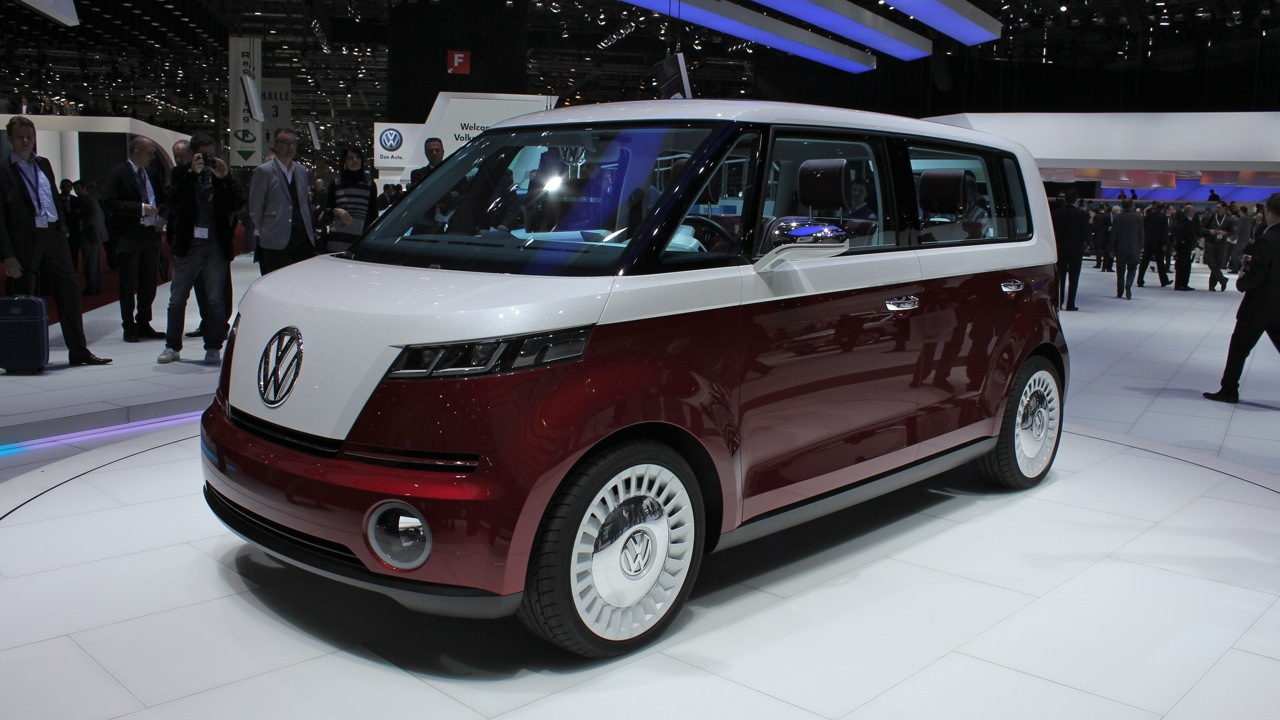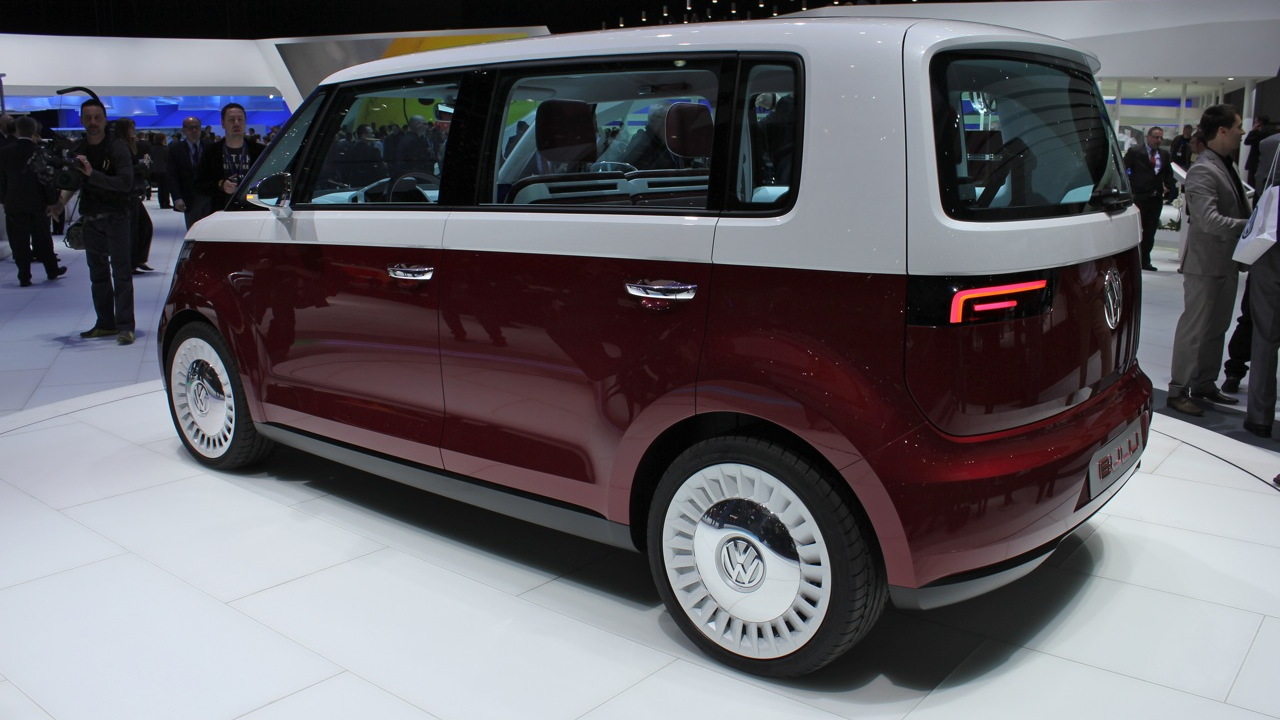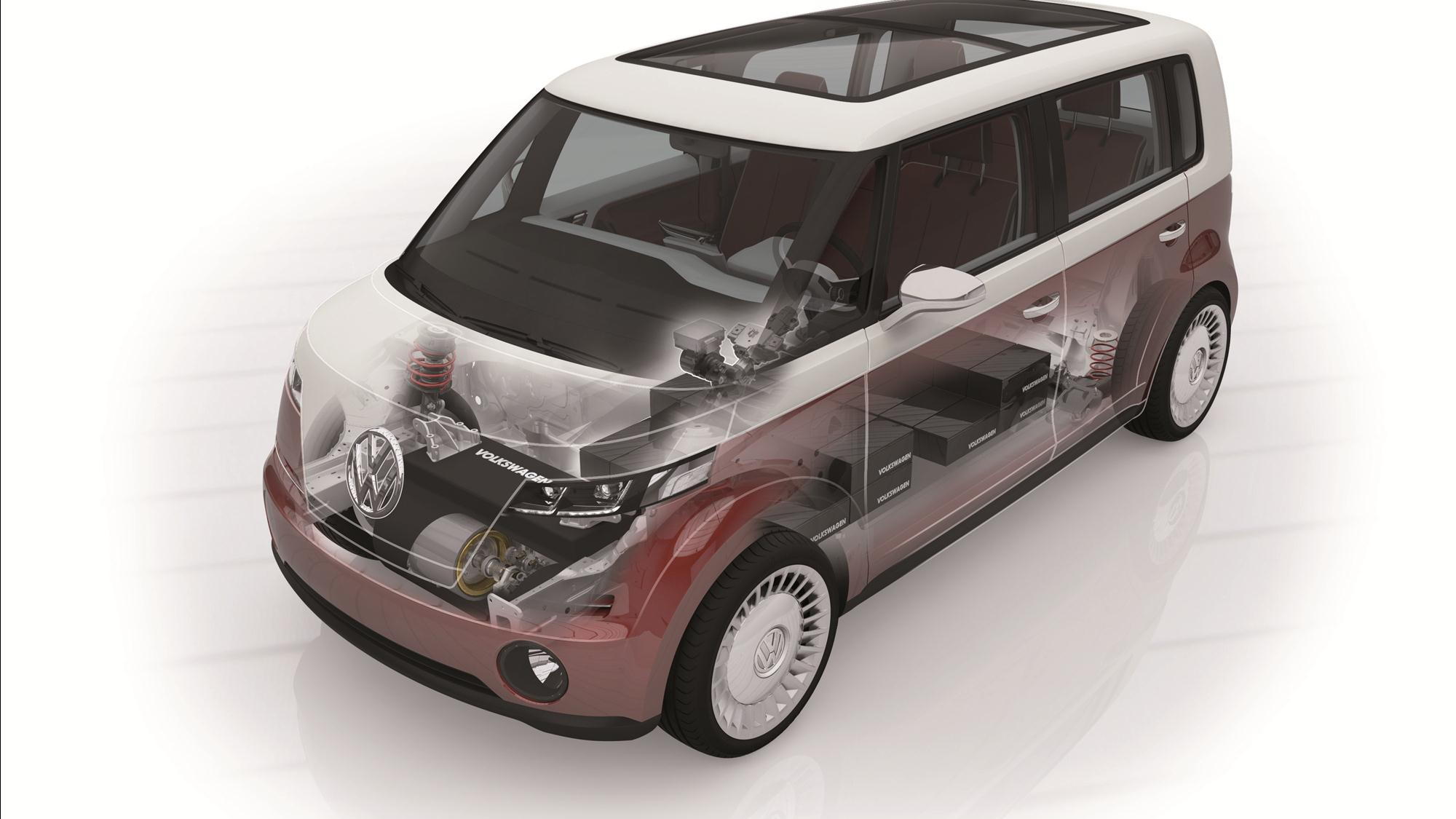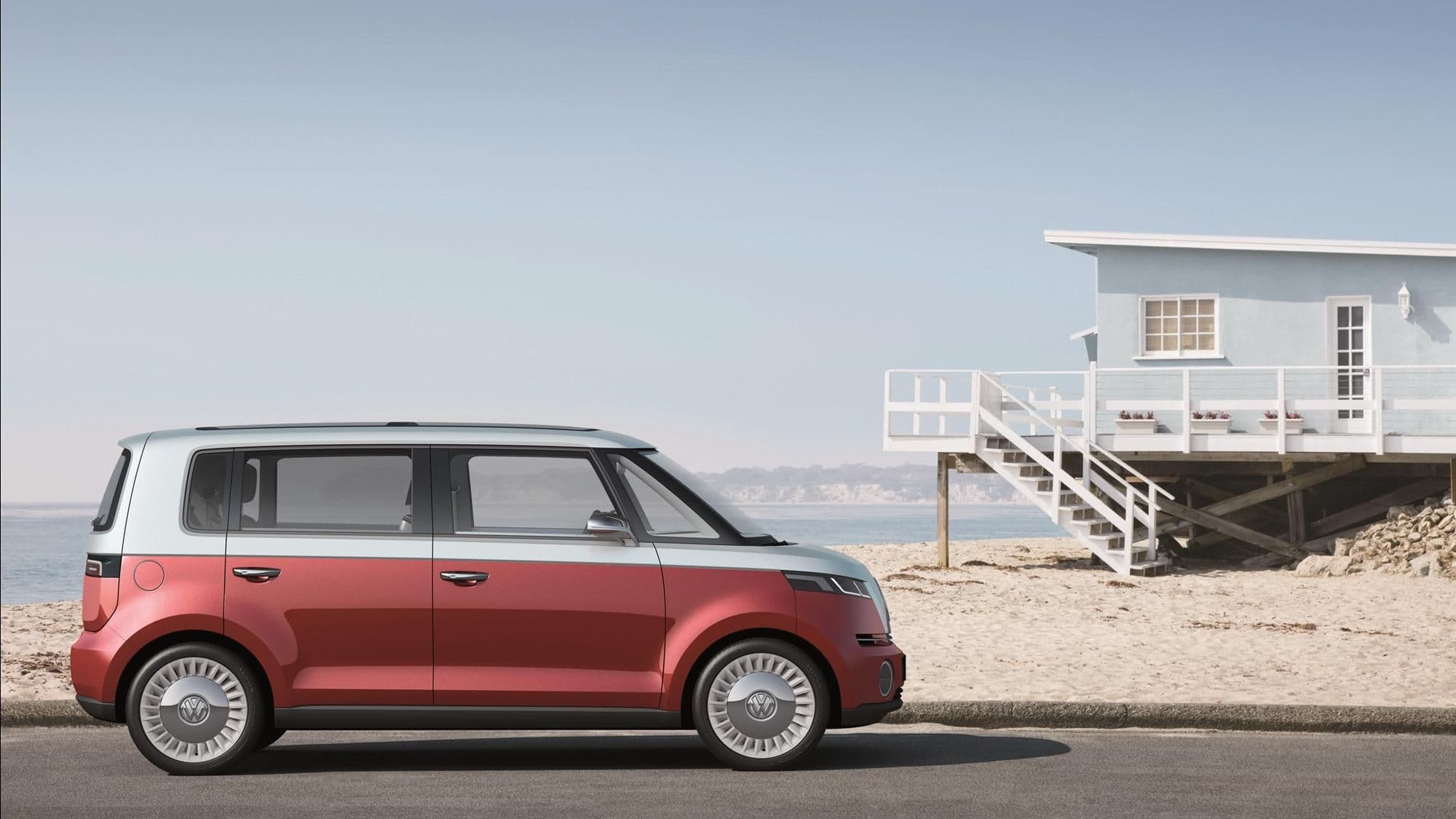If you're in the States, you may be just starting your day.
But in Switzerland, the flurry of activity during the first media day at the 2011 Geneva Motor Show is at its peak.
With record numbers of concept and production-car launches, our team is shooting photos and posting details as fast as they can.
Here are some of the earliest, most significant green concept vehicles unveiled so far. We'll cover production cars in a subsequent post.
Volkswagen Bulli (Microbus) Concept
You can't help but love the idea of a new Volkswagen Bus, and VW has tried for a decade to create a modern interpretation.
Their latest concept "has the potential to establish a new people carrier," VW said, which may be code for a thought something like, "This one we really do intend to launch as a production car."
Unlike the rear-engined original, the Bulli Concept is driven by an 85-kilowatt (114-horsepower) electric motor powering the front wheels. Volkswagen says the 40-kilowatt-hour lithium-ion battery pack provides roughly 185 miles of range.
Acceleration isn't spectacular, at 11.5 seconds for the 0-to-62-mph sprint, but then, the same distance in the old bus was measured in minutes. Top speed is limited to less than 90 miles per hour.
The Bulli is also designed to accept VW's conventional front-wheel-drive powertrain as well, using either gasoline or clean diesel engines. At 13 feet long, 68.5 inches wide, and 66 inches tall, it is shorter but wider than the original Microbus.
Clever interior features include a front bench seat that both splits and folds, a rear seat that stows for more cargo space, and even a camper function using a sleeping platform made by flattening the seats.
The name Bulli is what Germans called the original Type 2 Volkswagen known in the States as the Bus or Microbus. Sadly, once again, a German name turns out to mean something not very pleasant, just like Audi's e-tron line of electric cars.
Rolls-Royce 102 EX Phantom Experimental Electric
This battery-electric Rolls-Royce Phantom may be the most audacious concept at the Geneva Motor Show.
Rumored since late 2009 and confirmed last week, the fully electric Phantom truly takes the desired Rolls-Royce experience of "wafting" to a new level for the new century.
Largely indistinguishable from a conventional V-12 Phantom on the outside, it houses a fully electric drivetrain with a lithium-ion battery pack roughly the size of the Houses of Parliament.
More precisely, that would be a 71-kilowatt-hour lithium-ion battery pack that provides current to a pair of water-cooled electric motors producing 290 kW (388 hp) of power.
Recharging the regal beast--a task delegated to the help, naturally--is accomplished via a pair of large three-phase chargers of the sort normally used only in large commercial vehicles.
The electric Phantom is only an experimental vehicle at the moment, as indicated by its 102 EX designation in the Rolls-Royce prototype log. But the car has its own website, so perhaps production may not be entirely out of the question.
Cost? If you have to ask ....
Land Rover Range_e diesel plug-in hybrid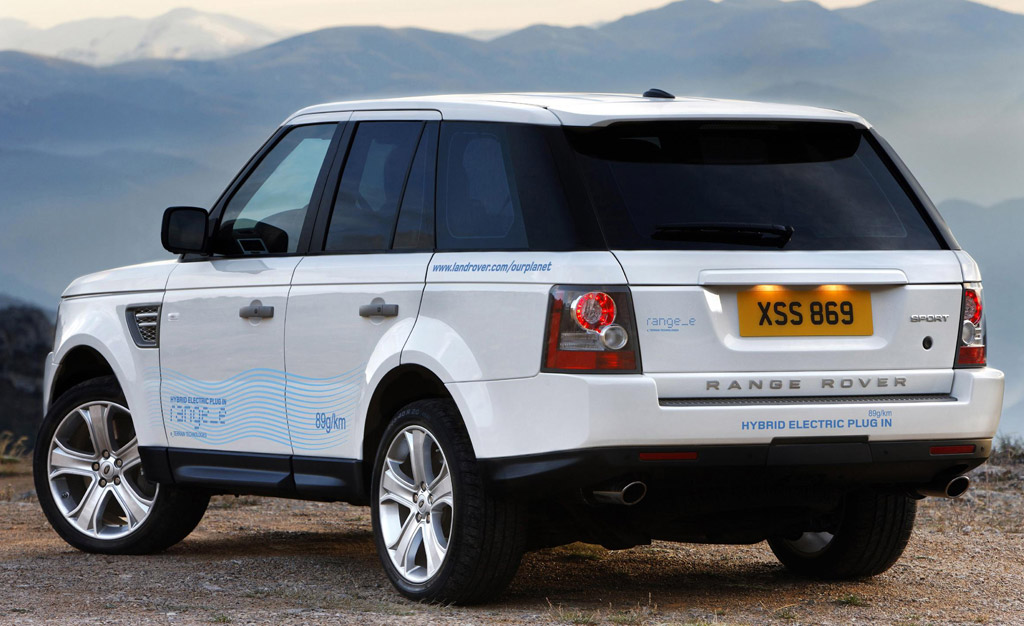
Land Rover range_e Diesel Plug-In Hybrid Concept
Previewed by Land Rover a couple of weeks ago, this is the latest technology concept from England's enduring all-wheel-drive brand, now part of the Indian-owned Jaguar Land Rover group.
The range_e (yep, that's an underscore) pairs a high-efficiency turbocharged 3.0-liter clean-diesel V-6 engine to a parallel hybrid system uses a 69-kW (93-hp) electric motor between the engine and an eight-speed ZF automatic transmission.
The most recent iteration of the concept now adds a plug-in battery pack that can be recharged from wall current. As in previous versions, the experimental drivetrain is housed in an adapted Range Rover Sport body.
Land Rover quotes an all-electric range of up to 20 miles for the plug-in version, and a top speed of 120 miles per hour--though clearly not at the same time. The diesel fuel tank expands the range to a respectable 690 miles.
For the large, heavy, luxury sports utility vehicles built by Range Rover and Land Rover, a hybrid powertrain can produce substantial increases in fuel efficiency.
The larger battery pack of a plug-in hybrid adds a lot of cost, but will allow those vehicles to enter the zero-emissions central-core zones that many European cities are planning to institute. 2011 Mazda Minagi Concept 2011 Mazda Minagi Concept 2011 Mazda Minagi Concept 2011 Mazda Minagi Concept



Mazda and Ford have gone their separate ways, and the aging Ford Escape will be replaced by a new vehicle based on the Vertrek concept shown at January's Detroit Auto Show.
That means the low-volume Tribute and Tribute Hybrid models built for Mazda by Ford will vanish, leaving Mazda without a compact crossover. Hence the unveiling of the Minagi Concept at Geneva.
Fitted with Mazda's high efficiency SkyActiv engine and transmission, the Minagi is likely to be seen as a production vehicle without too many changes.
In the U.S. market, a vehicle derived from the Minagi concept would fit neatly under the CX-7 midsize crossover. 2012 or 2013 Mazda CX-5, anyone?
+++++++++++
For High Gear Media's complete coverage of the 2011 Geneva Motor Show, click here.
